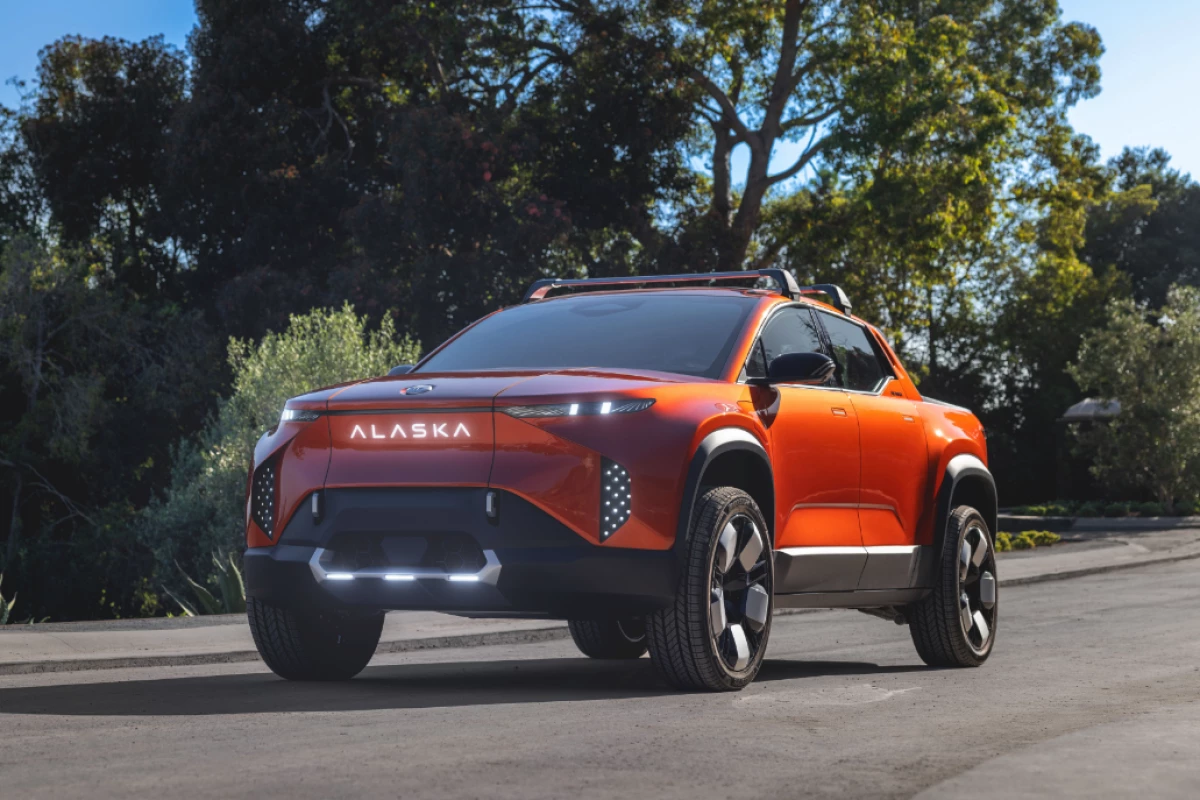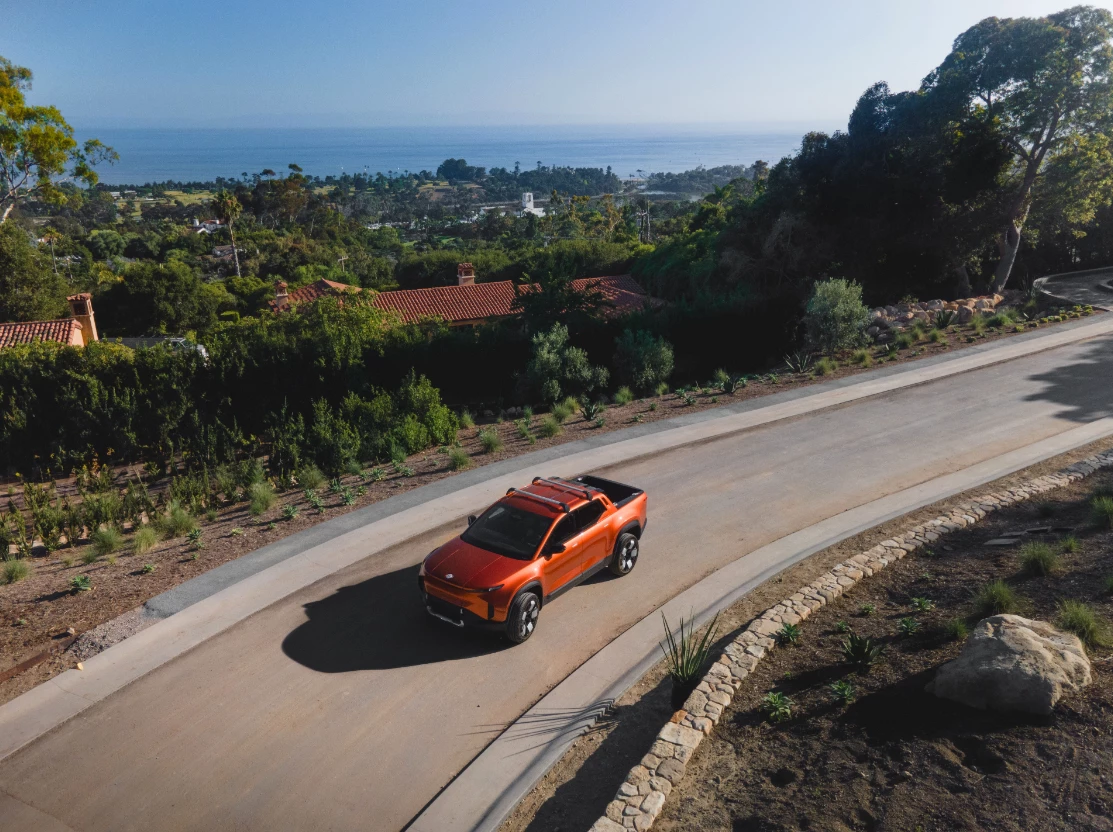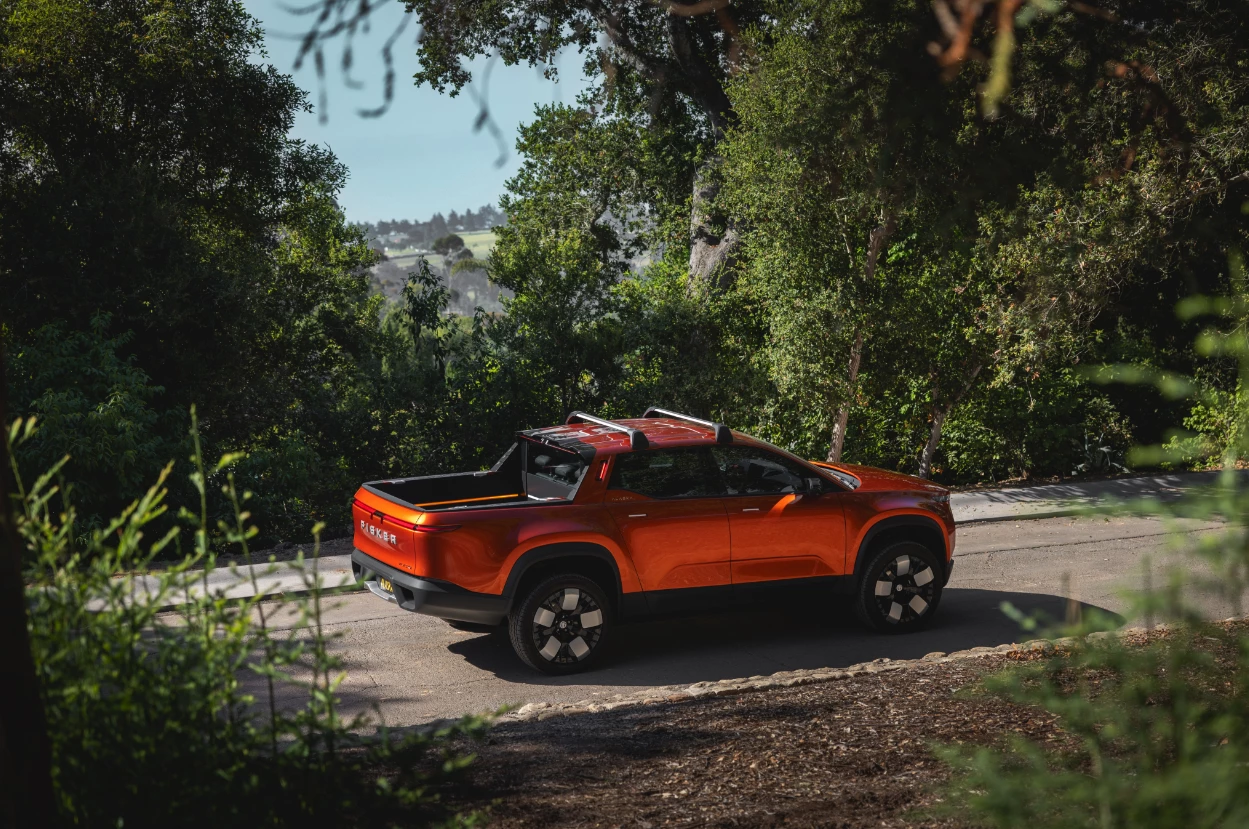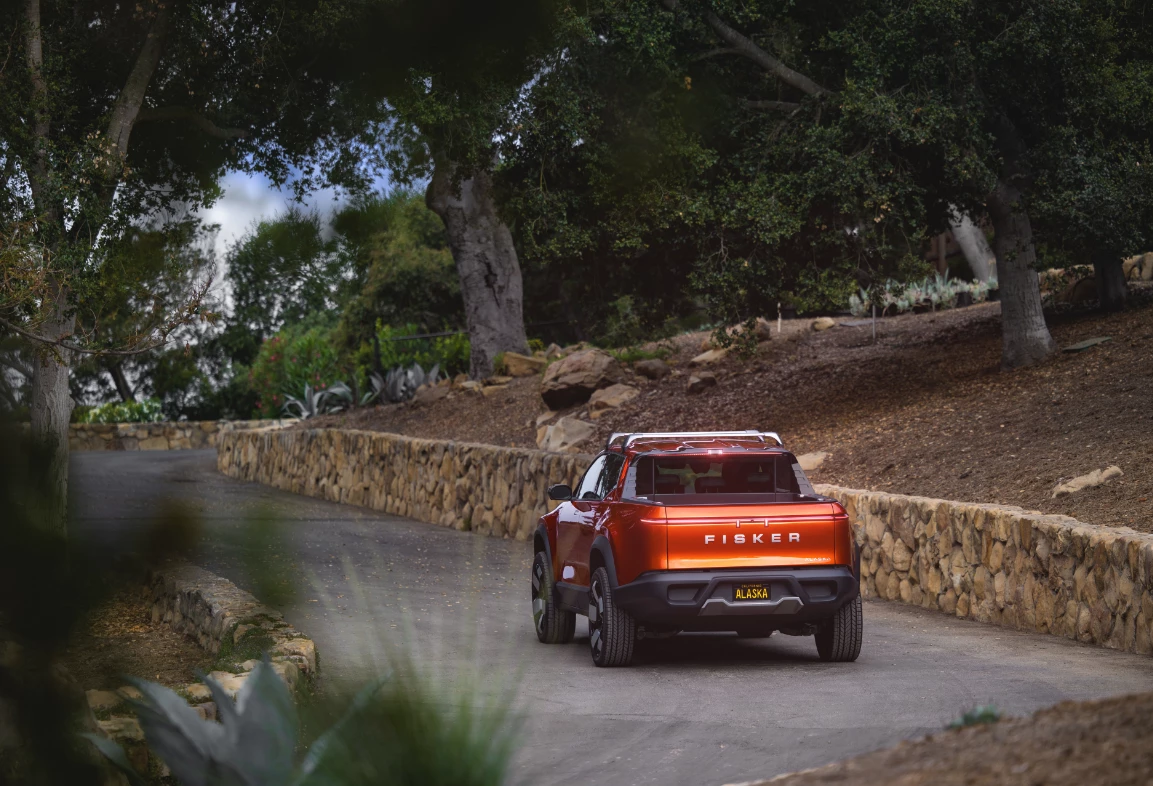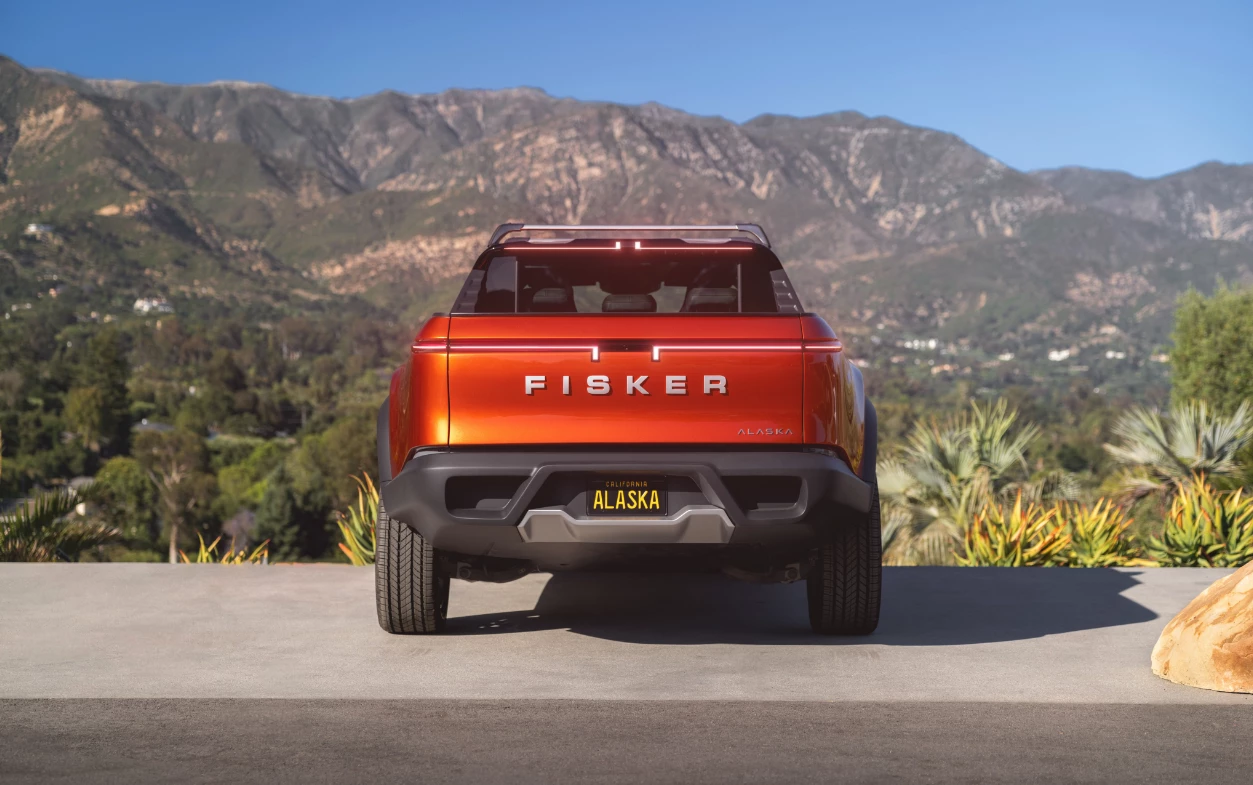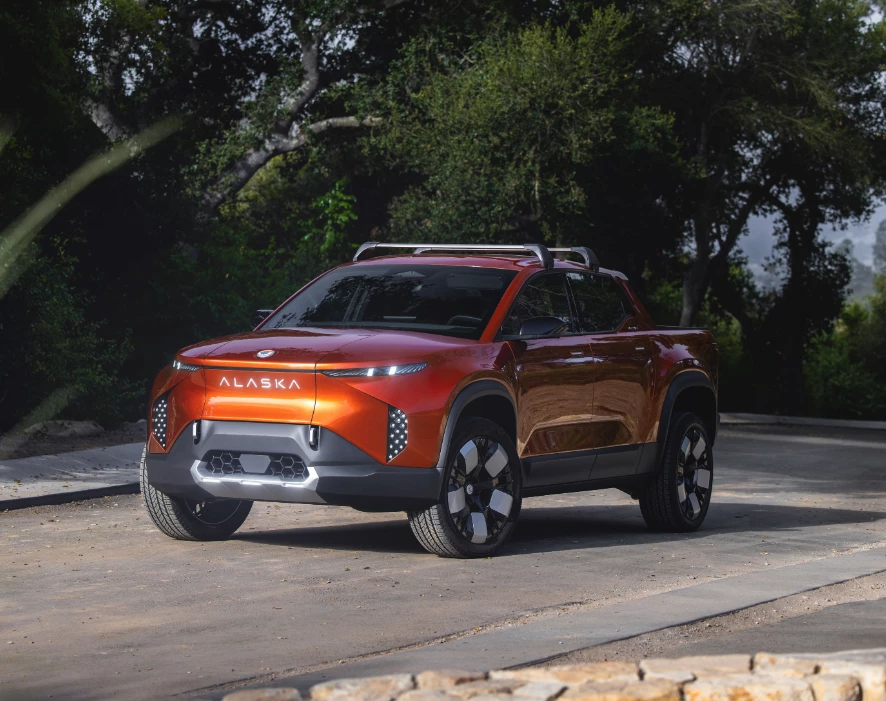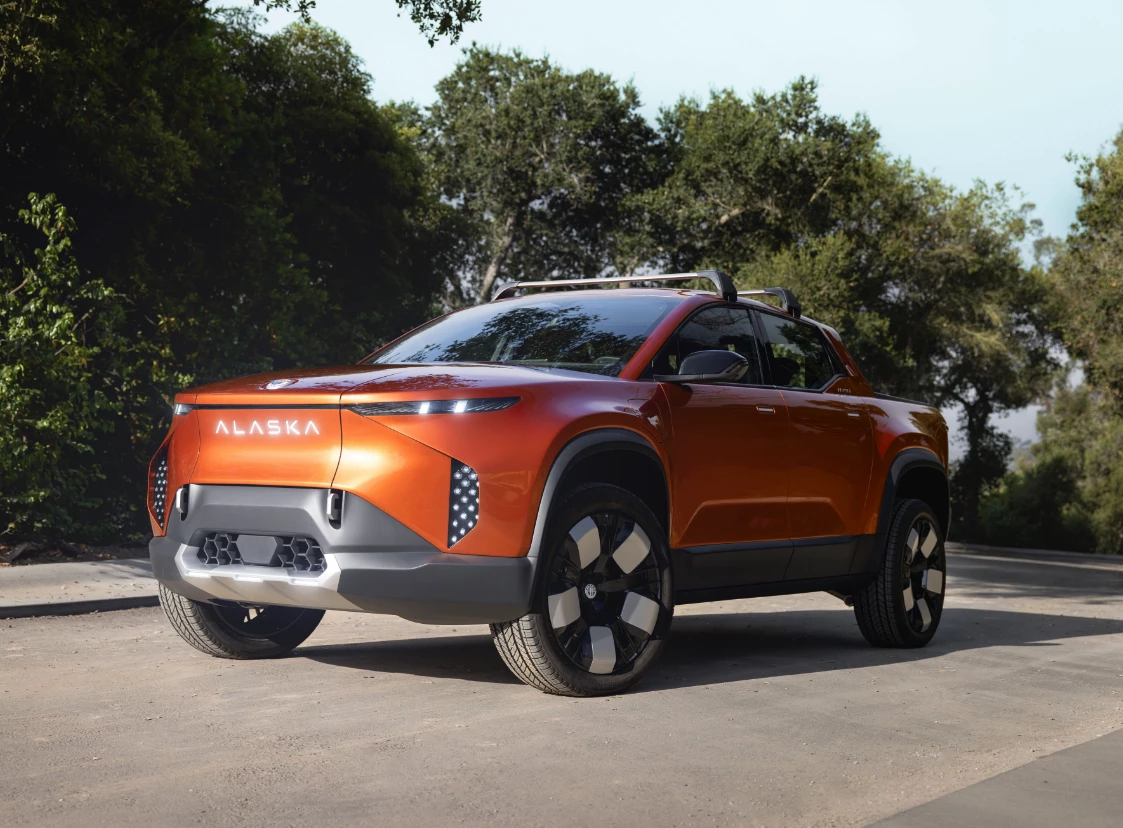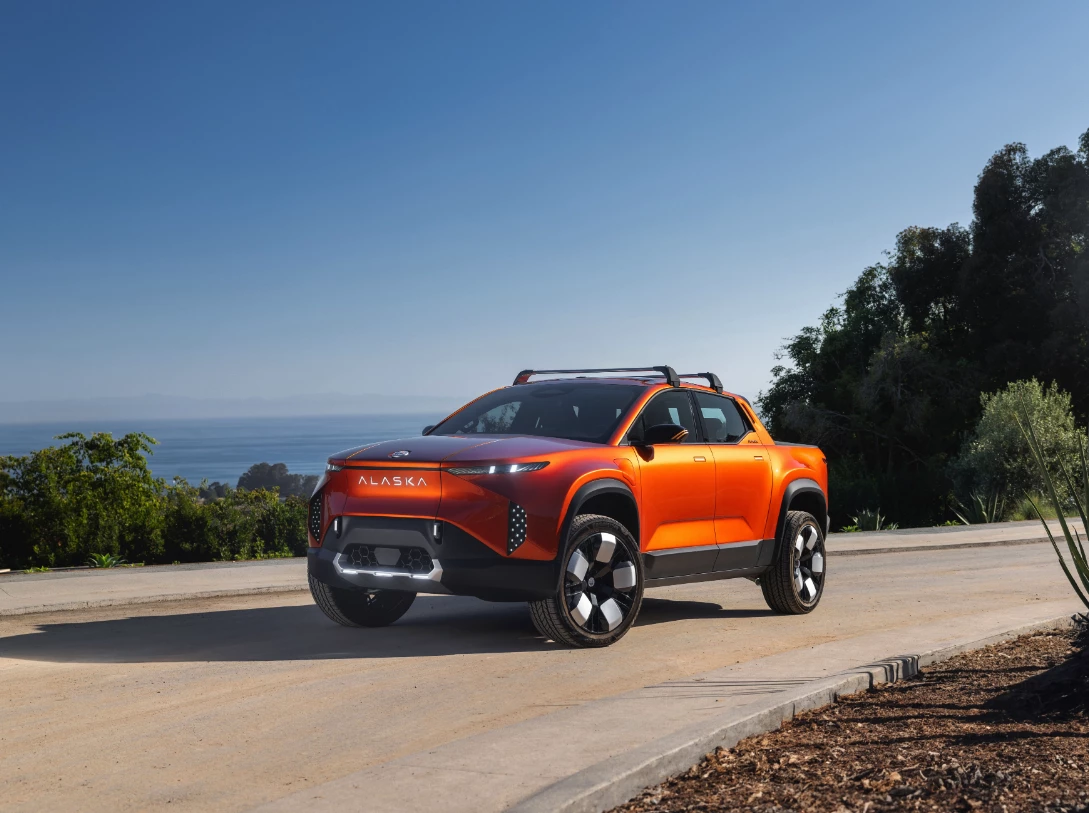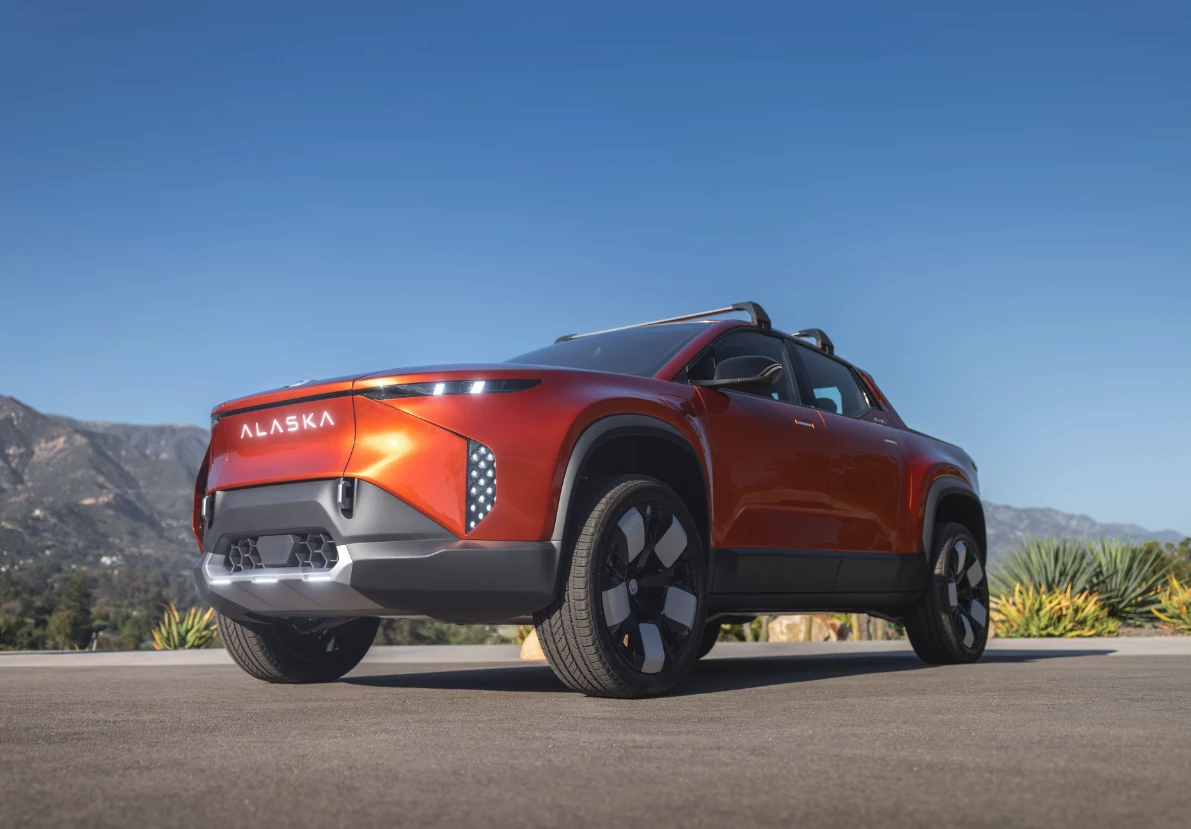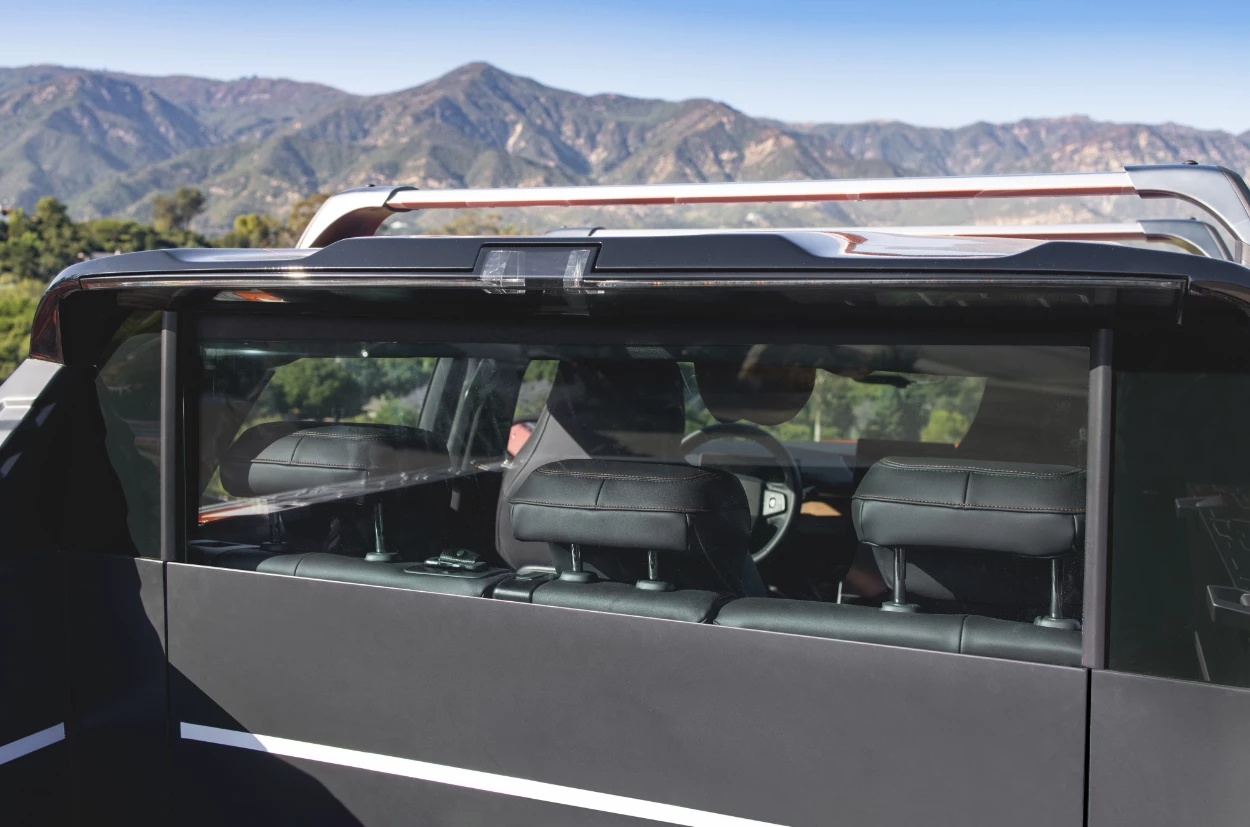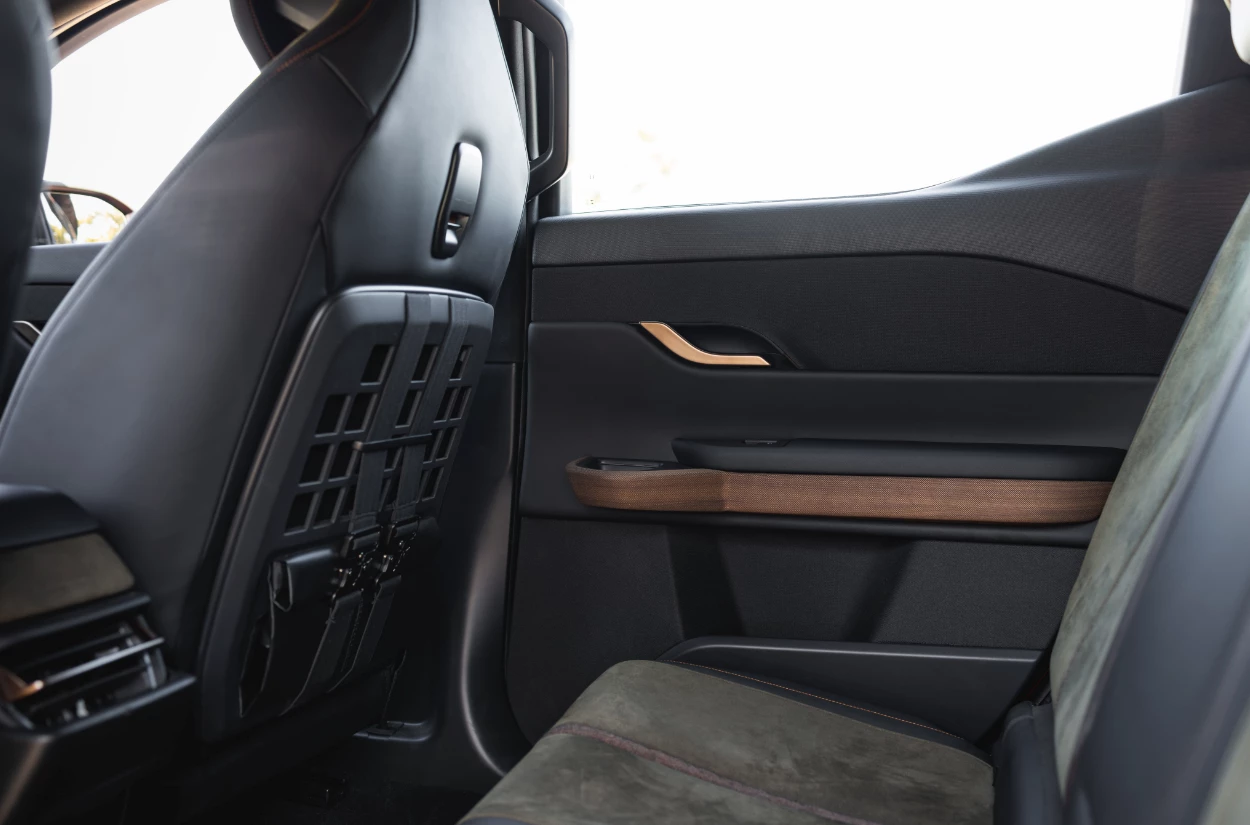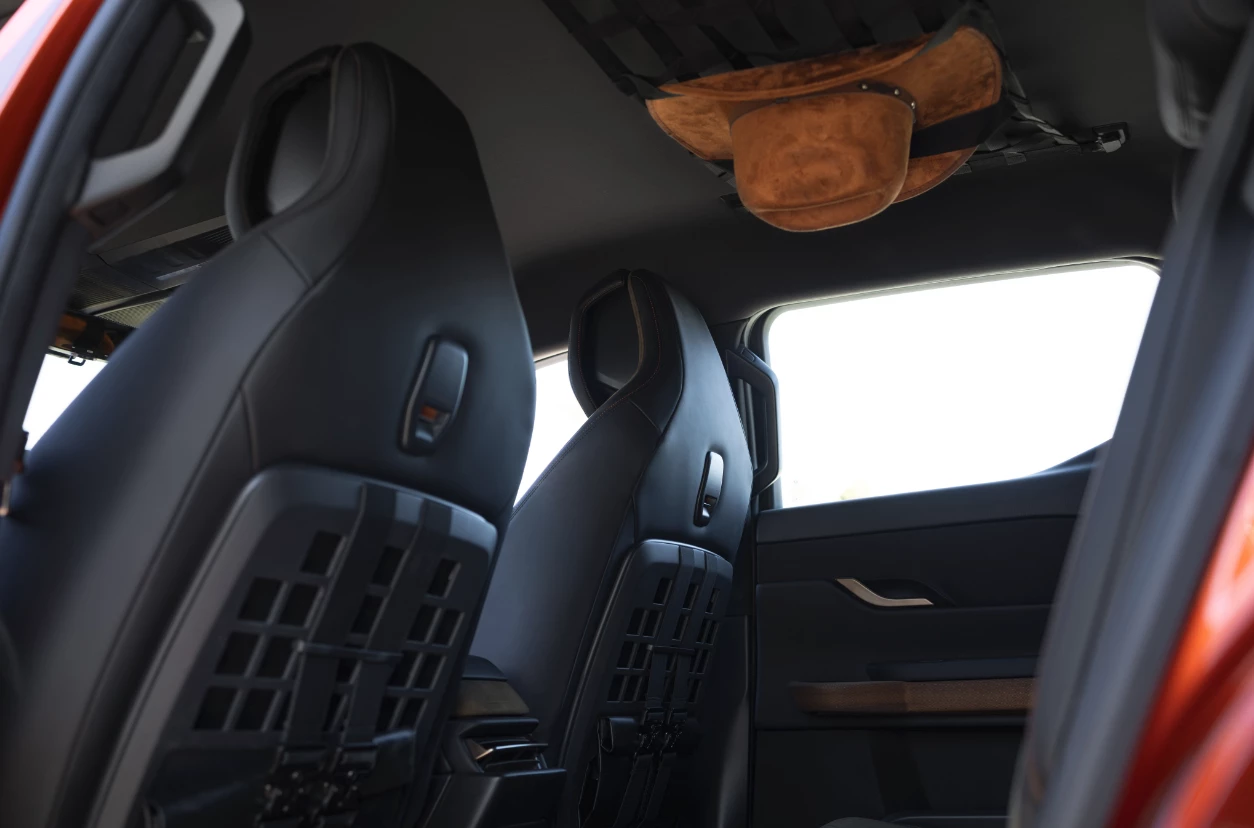The electric pickup market has welcomed a new contender. After sharing a few details about its upcoming product plans earlier this month, Fisker has provided a closer look at its Alaska pickup truck. The new "Super Sport" pickup looks all kinds of promising on paper, combining a solid 340-mile (547-km) range, an indoor/outdoor bed that expands from 4.5 feet (1.4 m) to over 9 feet (2.7 m), and a planned base price in the mid-$40s. With over a year left before production begins, the Fords and Rivians of the world don't have to worry too much yet, but right now the Alaska certainly looks like it could become a formidable competitor.
Though the Alaska's soft curves are more reminiscent of compact American trucks or Aussie utes, the 209-in (531-cm) pickup sizes more closely to midsize trucks like the 211-in (536-cm) Ford Ranger or 212-in (538-cm) Toyota Tacoma than small trucks like the 200-in (508-cm) Ford Maverick or 196-in (498-cm) Hyundai Santa Cruz. The Alaska bed, however, sizes among the smallest on the market at 4.5 feet (137 cm), a length shared with the Maverick and the Rivian R1T (the Santa Cruz's is even smaller).
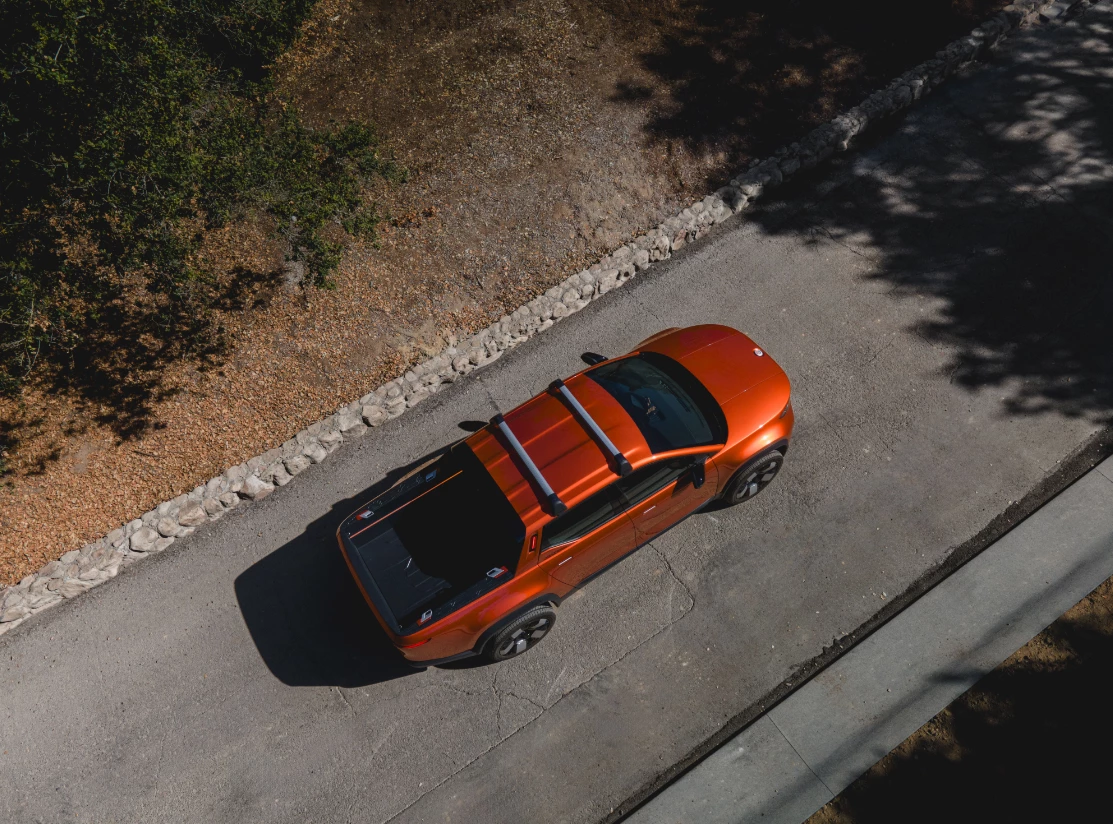
“Alaska breaks with convention," explained Fisker chairman, CEO and namesake Henrik Fisker. "It doesn’t fit into any current segment, as it combines features of a midsize pickup with the capabilities of a full-size thanks to its innovative expandable bed design."
That expandable bed works via a "Houdini" partition behind the rear seats. Once the wall is down, the bed floor extends onto the folded rear seats, adding 3 extra feet of length to create a 7.5-foot (2.29-m) indoor/outdoor bed that outstretches all but the longest (8-ft/2.4-m) full-size pickup beds. Drop the tailgate and you have 9.2 feet (2.8 m) of total bed floor length with which to haul and pack. Panels over top the folded rear seats and behind the front seats protect from damage and scuffing.
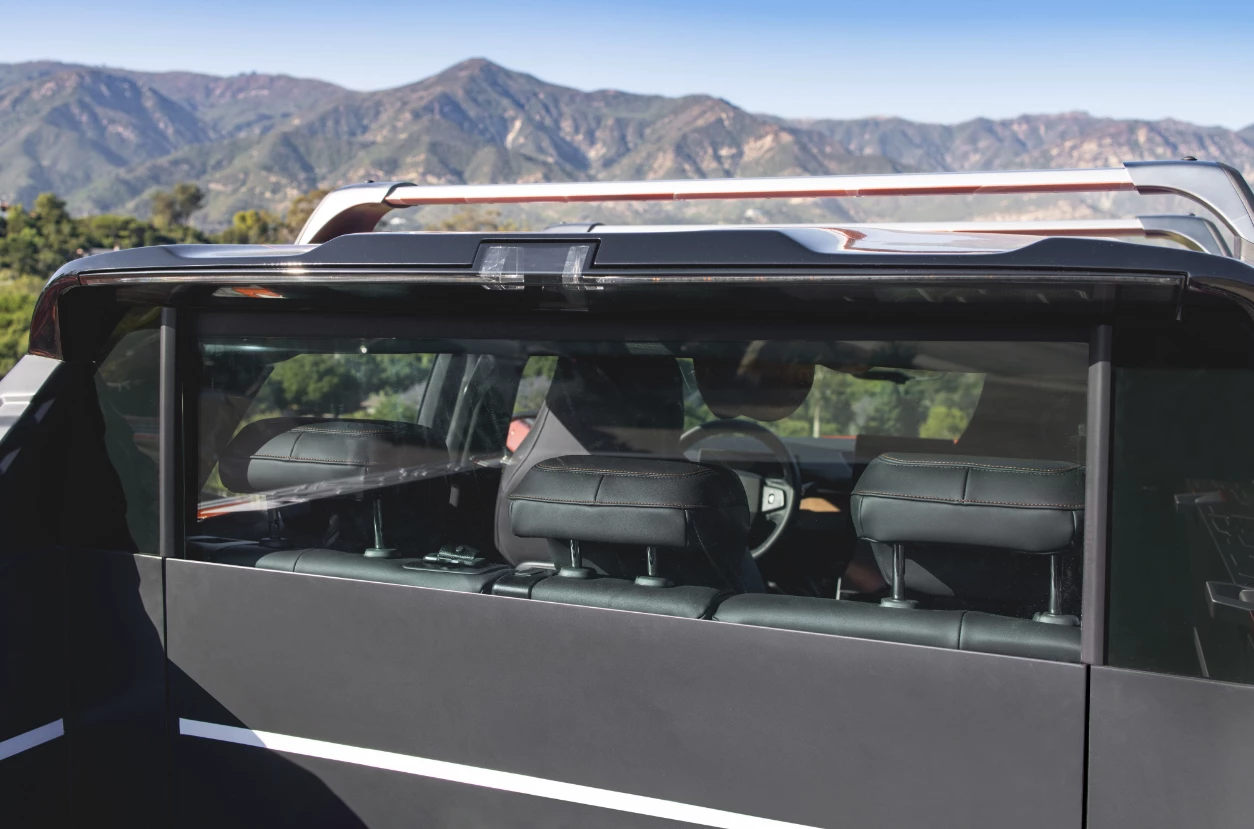
Fisker uses a similar strategy to the one General Motors has employed with the Chevy Silverado EV and GMC Sierra EV, both of which use a retractable "Midgate" partition and flexible tailgate to extend bed length from just under 6 feet (1.8 m) to just under 11 feet (3.4 m). Fisker does it within a midsize truck package, though, offering a shorter, more maneuverable overall truck design influenced by its SUVs.
Fisker plans to offer 75- and 113-kWh battery options for respective range estimates of 230 and 340 miles (370 and 547 km). Without giving any motor or output details, it says it's targeting 0-60-mph (96.5-km/h) acceleration of 3.9 to 7.2 seconds, depending on spec.
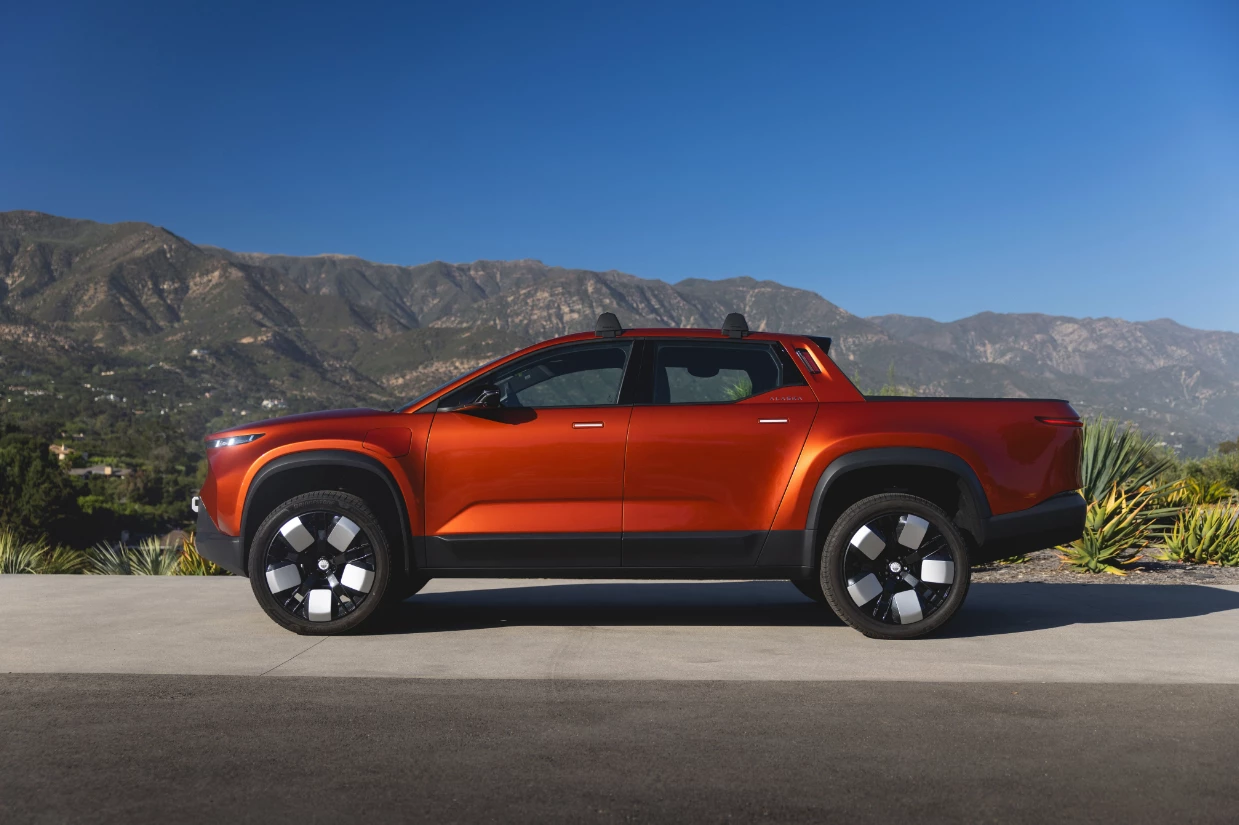
As for the interior, Fisker will load it up with novelties like a Big-Gulp-size cupholder it calls the world's largest, a cowboy hat net on the headliner, and a passenger-side tablet holder. Today's photo drop doesn't bring the cockpit into focus but shows a nicely appointed interior with five multi-material seats, wood-look and copper accents all around, and contrast stitching.

How much of those figures and features will come on the base Alaska is a question for the future, but Fisker is aiming at an ambitiously reasonable starting price of US$45,400. We won't be surprised, however, if that price takes a ride north on the way to the announced Q1 2025 production start. The Alaska will be built in the US.
Those willing to put money down early can make a $250 reservation now on Fisker's website, linked below.
Source: Fisker Inc
